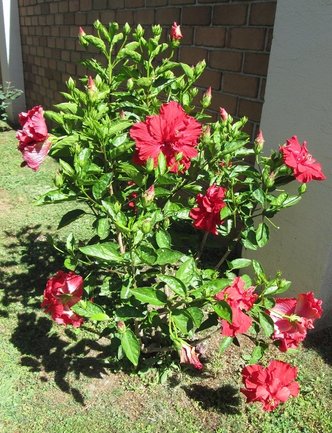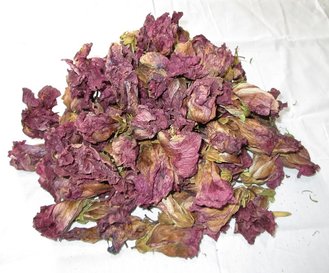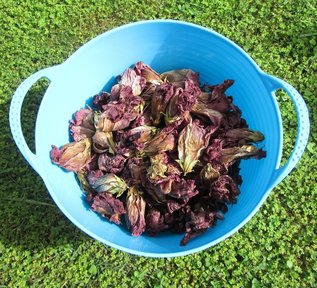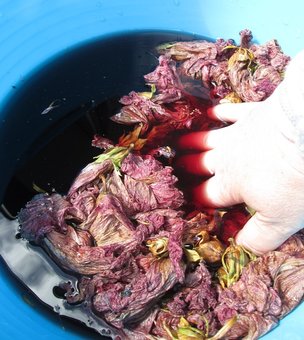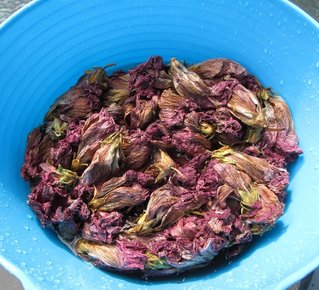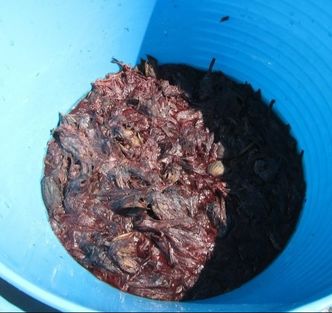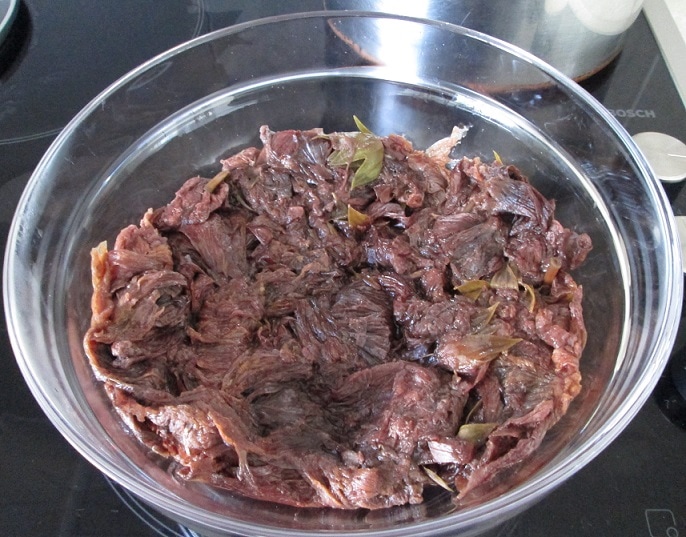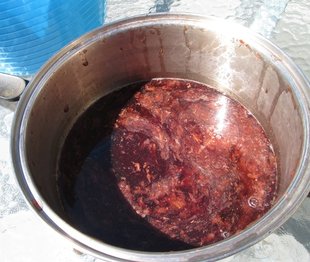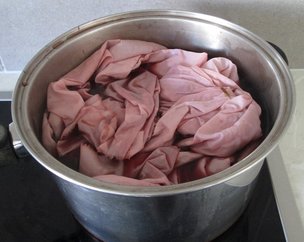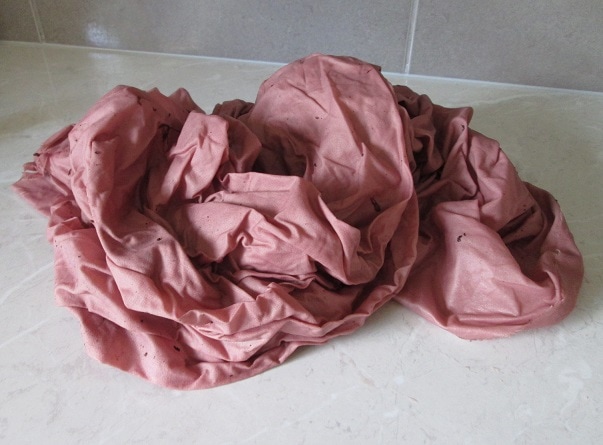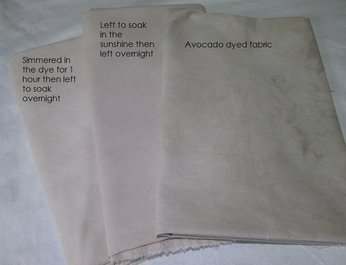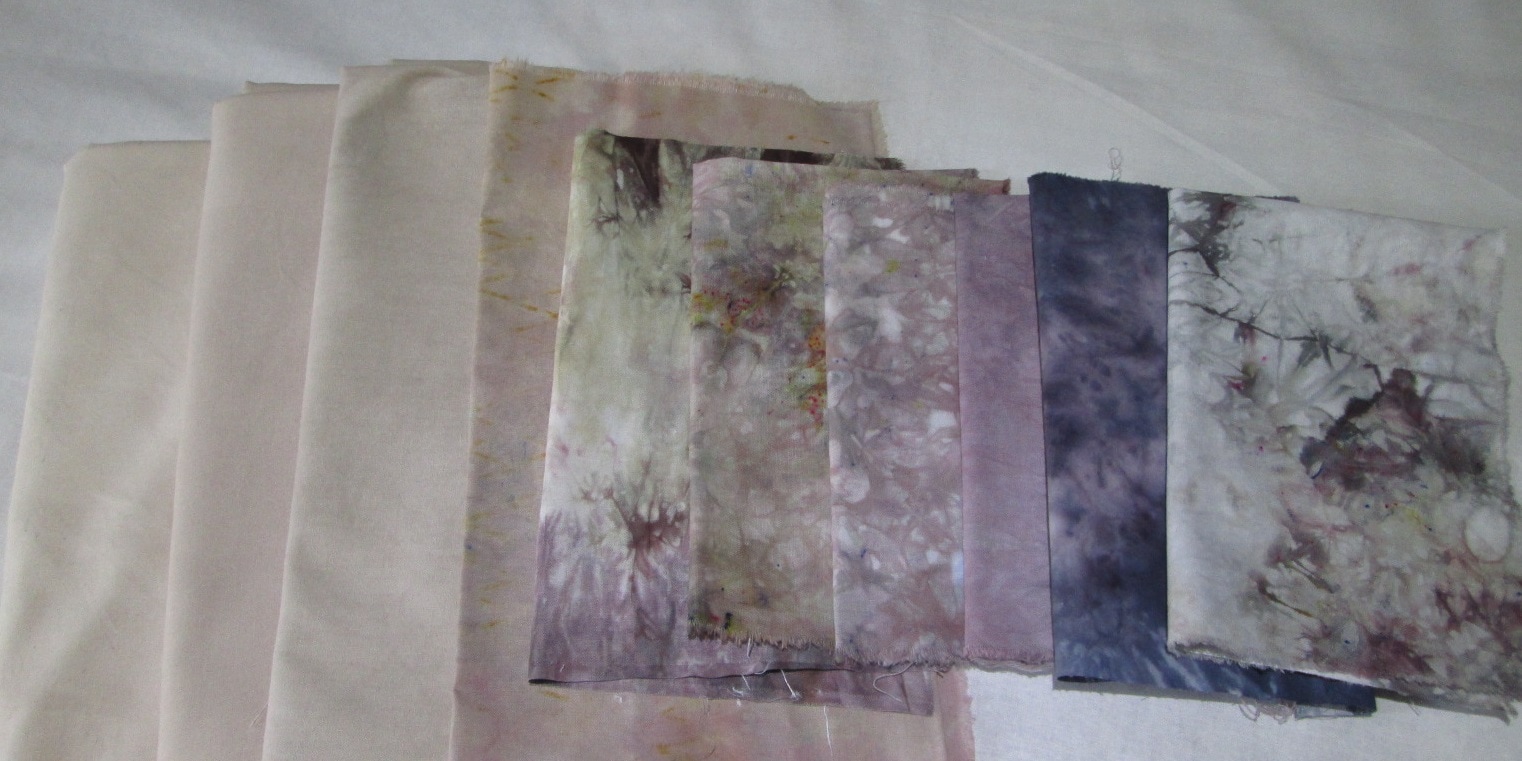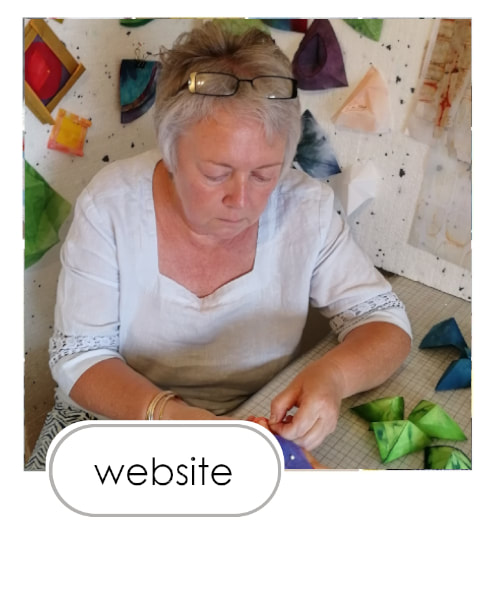I'll use them to dye some fabric.
To make the dye I started with about half a bucket full of dried flowers and added just enough cold water to cover them. They were very buoyant and I had to squish them down to get them to start absorbing the water. I left the bucket out in the sun all day to stew. The next day I let the sun warm it all up again then squished the whole lot though an old sieve. The flowers had completely broken down into a silky mush, but the water had taken on an incredibly dark red wine colour.
Before I added the fabric I decided to mordant it in the hope that I would get a better result. I didn't want to use anything toxic, so I chose to use vinegar. All I did was make a mixture of water and vinegar (1 part vinegar to 4 parts water) and simmer the white fabric in it for an hour. After 1 hour I left the fabric to cool in the solution and then squeezed it out ready to dye. If I had been scientific I would have tried a mordanted piece of fabric and a non mordanted piece to see the difference - but if I'm completely honest - I forgot.
As I had a lot of dye liquid I decided to see whether simmering the fabric in the dye would give a darker colour than simply leaving the fabric to soak in the in the sun. I cut the the squeezed out fabric into two and put one into my dye saucepan and simmered it for an hour then left it to cool overnight. The second piece I just put into the dye bucket and left it out in the sun.
The next day both pieces looked exactly the same. Finally I put them both into the washing machine and washed them in cold water with a little delicate washing liquid.
The photo above shows how the two pieces of fabric turned out. They are both almost identical (so there was no need to use any electricity to simmer the fabric at the end - and quite possibly I could have done without simmering the vinegar either - something to explore in the future) and have a very pretty pale pink with a hint of greyness. I suppose I could call it mink. I still have a piece of avocado dyed fabric from last year so I have included that in the photo too (on the right). That has a similar colour but has a little more brown in the pink. It actually goes very nicely with the hibiscus dyed fabric. (You can read the post about dyeing with avocado pits and skins by clicking here and here.
As delicate as the fabric is I think it needs a bit of a kick to create something a little more interesting - so I mixed up some procion to dye some more smaller pieces of fabric to co-ordinate. I used fuscia, golden yellow, charcoal, pewter, my current favourite, cobalt. And this is what I now have - I think it look great.
Thanks for reading.
|
|
